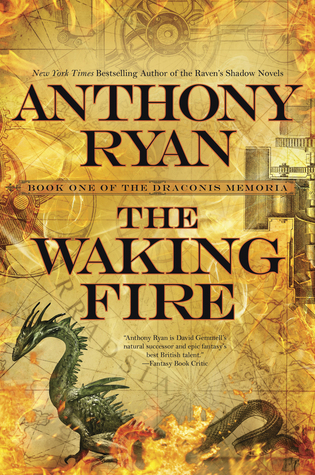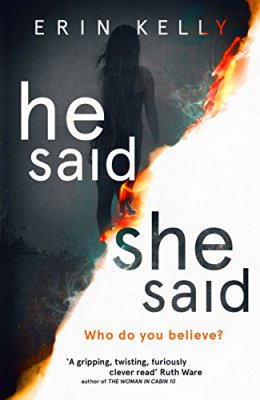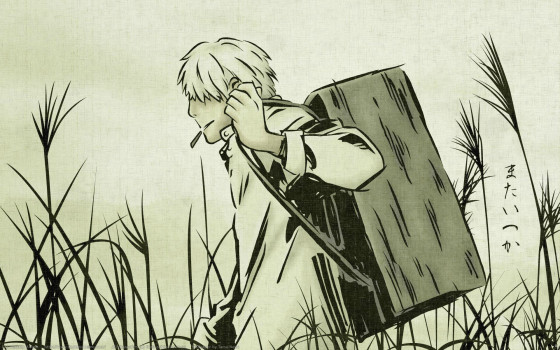By Alex Mann
This is an account of Kyle’s story based on his memory. To protect the reputation of the subject, his family and friends, this article uses pseudonyms. This article also contains explicit language.
After drinking a fifth of Jameson Irish Whiskey, at least 12 Coors Lights, popping a handful of 5 milligram Percocet and crushing and snorting a 30-milligram Roxicet, Kyle loaded “one big ol’ round” into his .44 magnum.
Kyle crushed the beer cans and smashed the whiskey bottle, leaving his hands a bloody mess. He wrote “sorry, mom” on a post-it note, stuck it to his chest and raised the gun to his head. But he couldn’t cock the hammer back because his hands were too slippery from the blood. He persisted, fumbling with the hammer until he could cock it. Then, he pulled the trigger. No dice. The round was in the wrong chamber. Kyle spun the chamber around a few times and then… he blacked out.
The next thing he remembered was waking up to a wrecked room littered with crushed beer cans and green glass shards. The revolver? On the floor covered in brown, coagulated blood. Kyle? He was alive, but coming down from an opioid high and floored by an “insane” hangover.
This happened about a month after his best friend John was killed by a truck and approximately a year after Kyle broke his foot — it was run over by a forklift at work — yielding a plentiful supply of prescribed painkillers.
It was not the only time Kyle attempted suicide, nor was it the first or only time he drank and took drugs until he lost consciousness. He drank alcohol in excess and experimented with drugs from age 12 onward. But it took a work injury and tragedy to push his drug use over the edge and for him to become a “slave to the needle.”
The opioid epidemic hit Maryland particularly hard, with heroin related deaths increasing 72 percent from 2015 through the third quarter of 2016. Fentanyl-related deaths soared over the same timeframe, increasing 284 percent, according to the Maryland Department of Health and Mental Hygiene’s preliminary 2016 data.
I met Kyle at a strip-mall Starbucks in Fairfax, Virginia. He was hesitant, but friendly. The coffee shop was crowded and loud, so I suggested we speak in my car. Kyle agreed, and we spent the next three hours in the front seats of my blue Ford Explorer as he told me his story.
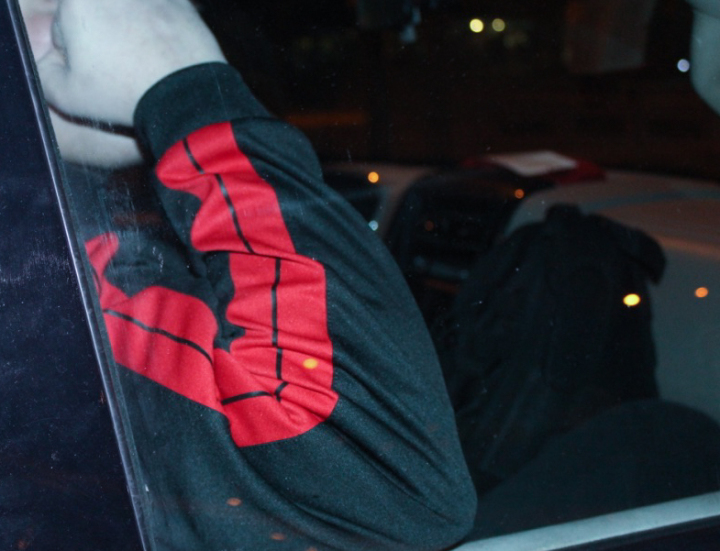 Kyle used to regularly drive to Baltimore for heroin. “Dude, I’d do that four times a fuckin’ day,” he said. “…didn’t matter if it was rush hour, didn’t matter if it was snowing, didn’t matter if it was Christmas, didn’t matter if it was Thanksgiving… it didn’t fuckin’ matter.”
Kyle used to regularly drive to Baltimore for heroin. “Dude, I’d do that four times a fuckin’ day,” he said. “…didn’t matter if it was rush hour, didn’t matter if it was snowing, didn’t matter if it was Christmas, didn’t matter if it was Thanksgiving… it didn’t fuckin’ matter.”
Growing up rough
Kyle grew up in a turbulent home. His father was emotionally and physically abusive. He was also an alcoholic.
“One of my earliest memories is him pulling a gun out and putting it to his head and putting it to my mom’s head,” Kyle said. “I used to have to call my grandpa because he’d be beating me and my sister so bad that my grandpa would come over and stick a gun in his face to get him off.”
Apart from his father, Kyle had his older sister and his mother at home. His mother endured similar abuse, but did little to stop it.
“I think I’ve developed some resentment against her in my mind,” Kyle said. “[For] allowing him to get away with treating us like shit. He treated her like shit too.”
Kyle, 30, was born in New Orleans and lived there until he was 12, when his family moved to Fairfax for a year and then to Northern Florida, where he took to the streets to escape a toxic home life. Though he had smoked marijuana with his sister in New Orleans, Florida is where he developed a taste for drugs.
Kyle was picked on in elementary school despite being one of the tallest kids in school, sparking a rebellious spirit that followed him between the three towns over the next six years.
In Fairfax, during middle school, 13-year-old Kyle burned down a school shed. He was arrested and given four years of probation, most of which he completed in Florida, although it did not prevent him from finding drugs.
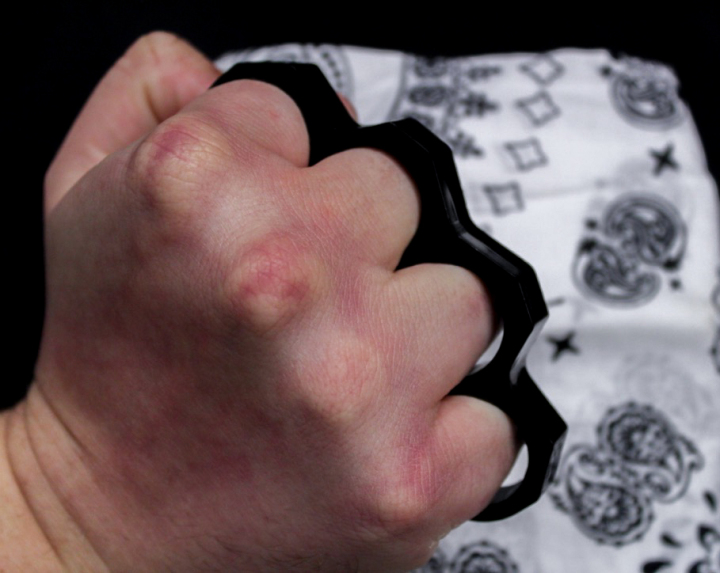 Kyle showed off his plastic brass knuckles — he used to regularly get in fights.
Kyle showed off his plastic brass knuckles — he used to regularly get in fights.
Rotating high schools
Behavioral problems followed him to each town and each new school. Kyle attended four different middle and elementary schools and four different high schools both because his family moved and because he got expelled for his behavior.
Kyle struggled to fit in at schools in New Orleans and Virginia. During early high school in Florida he couch-surfed at friends’ homes and slept behind McDonald’s. Additionally, he found a group to identify with: anti-racist skinheads.
“I was a homeless kid who was doing drugs, and found male role models through the skinheads,” Kyle said. “They all had jobs and their own places and they seemed to have their shit together.”
Being a skinhead meant Kyle had to shave his head, wear boots and like a certain kind of music, which was not an issue because he was immediately captivated by punk rock. The music gave him an outlet for the anger, hate and angst he was experiencing, while the shows were a place he didn’t have to worry about conforming — he could be himself.
On the streets of Florida he learned to fight and he started using drugs.
He said he started using because “you’re sleeping behind a McDonald’s, you know? You need something to kind of escape.” Kyle escaped his reality by smoking pot, “poppin’ pills” and drinking. The habits quickly escalated.
“That’s when I did meth,” he said. “I got turned onto Vicodin, and then started doing coke, smoking crack…shit like that.”
Kyle got in more trouble in Florida, so his family packed up and moved back to Virginia. He wasn’t allowed back into the public school system, so he attended an alternative school nearby, where he graduated early with a 3.4 GPA.
At age 17, while attending the alternative school, Kyle snorted heroin for the first time. He and some friends drove into Washington, D.C. to buy a “20 bag” and returned to Virginia to use and sell it between friends.
“It took a hurricane to bring me back here”
After high school Kyle left his parents, moving to Florida for a few months and then back to New Orleans. He lived with his sister, worked as a busboy at an Italian restaurant and did heroin “a few times here and there.” His move to the Big Easy was cut short by Hurricane Katrina, which smashed the Gulf Coast on Aug. 29, 2005, days after his 19th birthday.
His house in New Orleans was “about four driveways away from the actual break,” but he and his sister fled for Baton Rouge a day before the deadly flood.
The storm ravished Kyle’s neighborhood, killing many of his neighbors and work friends. The experience “was pretty traumatic,” he added.
Katrina forced Kyle’s hand; he had to return to his parents in Virginia.
“I always used to joke that it took a hurricane to bring me back here,” Kyle said, “because I was always like, I’m never going to move back in with my parents.”
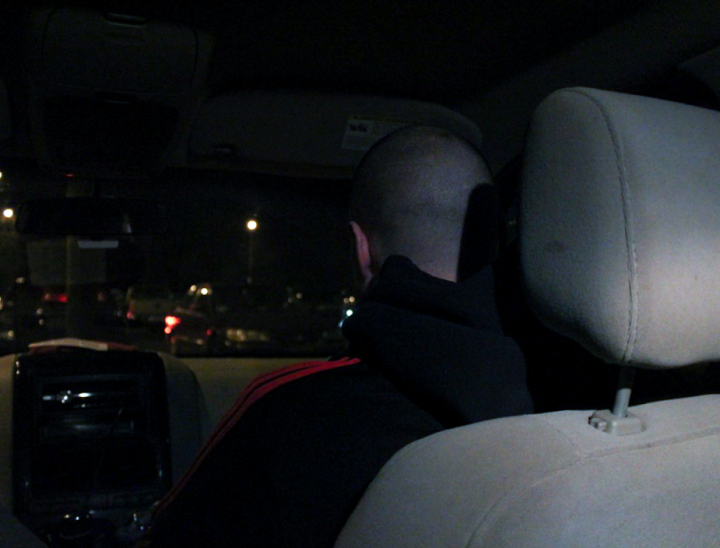 “That’s when I really started using, when he got killed,” Kyle said. The deaths of close friends sparked Kyle’s heavy heroin use.
“That’s when I really started using, when he got killed,” Kyle said. The deaths of close friends sparked Kyle’s heavy heroin use.
Injury, tragedy and opioids… lots of opioids
Upon returning from Louisiana, Kyle settled in with his parents and got a job at Lowe’s, where somebody ran over his foot with a forklift six months later. His left foot was broken badly — he still has nerve damage — and the doctor “threw fucking Percocet and Vicodin at me like it was his job.”
Kyle routinely left the doctor’s office stocked with 60 Vicodin (5 mg up to 7.5 mg), 90 Percocet (10 mg), 30 or 40 Valium (10 mg), 40 to 60 Xanax (1 mg) and 90 Adderall (10 mg).
“Next thing I knew, a week…two weeks… 90 Percocet’s are gone. I would take them all,” he said. “I started chewing them. Then all of a sudden, I met somebody around here who was like, ‘Trade me Xanax and I’ll give you Oxycontin.’”
At this point Kyle, 20, was “taking heavier and harder painkillers more often,” but not daily, which lasted about a year.
Just before his 21st birthday he got word that his friend John had been hit and killed by a truck while riding a bike in Florida,
“He was my best friend,” Kyle said. “I called his mom, ‘mom,’ his dad, ‘dad’… when I had nowhere to go, they took me in.”
He struggled to deal with John’s death, “that ruined me. When he died, I went off the chain.” Popping painkillers became a daily endeavor, “I would just sit in my room and do massive amounts of hardcore painkillers and not leave unless it was to get money or to get more of them.”
Around this time Kyle added Fentanyl, a powerful synthetic opiate up to 100 times stronger than morphine, to his arsenal of opioid drugs. He’d suck the juice out of 50, 70 or 75-microgram patches, typically prescribed to patients with chronic pain, “which if someone had no tolerance to that they’d fucking die.”
He recalled taking the fentanyl around 5 or 6 p.m., nodding off until midnight and then crashing again and waking up high the next day. Kyle would then open the patch and put it under his tongue.
“Next thing you know,” he said. “Since it’s still in your bloodstream and you’re sucking it in sublingually, you’re fucking high as a kite again.”
The agony of coping with John’s death in solitude, painkillers and heavy drinking reared their ugly head when one night, alone in his room, Kyle attempted suicide.
“Bottle of whiskey, a bottle of Percocet and a loaded .44 magnum…” Kyle said.
“And, what happened next?” I asked.
“I passed out before I could shoot myself.”
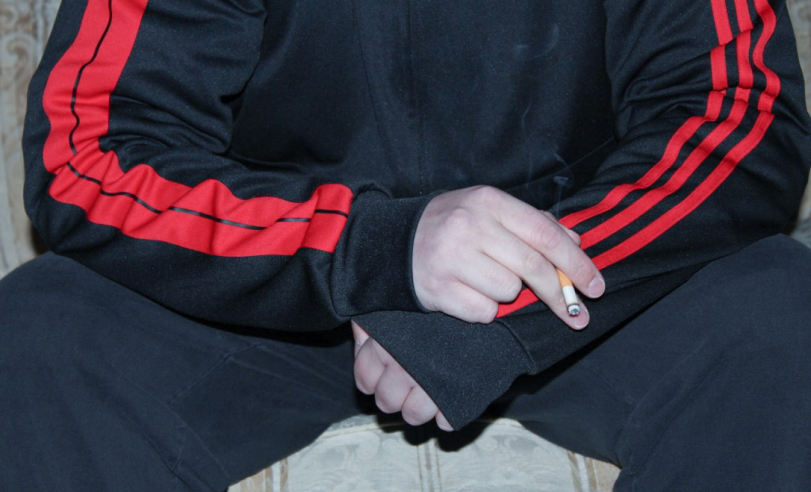 The addictive power of drugs was apparent to Kyle from the start. “The first time I snorted dope I was like ‘wow, I gotta be careful with this,’” he said.
The addictive power of drugs was apparent to Kyle from the start. “The first time I snorted dope I was like ‘wow, I gotta be careful with this,’” he said.
Setting and breaking rules
Kyle’s ex-fiancée came into the scene in 2008. She slipped two discs in her back and had an equally substantive supply of painkillers. They developed a tolerance together. Soon Percocet didn’t achieve the high they wanted, so they traded it for Oxycontin, then Oxy for heroin — the cheaper and more potent option.
Kyle set rules to follow to avoid addiction, “I’d only snort it, not shoot it; I’d wait three days after. [So] I wouldn’t go through withdrawal.” His friends and fiancée started shooting regularly, but he stuck to snorting for at least three more months.
Meanwhile, Kyle worked full-time, sometimes 60-hour weeks, as a parts driver and H.V.C. (heating, ventilation and air conditioning) apprentice to support his and his fiancée’s addiction.
“I was a fully functional addict,” he said. “The whole time I was either high or I’d buy Suboxone or Methadone off the street and I’d take those so I wouldn’t be [dope] sick, and that got me through years of work.”
Getting dope sick is a junkie’s nightmare. Kyle described it as a combination of hot and cold sweats, involuntary leg kicking, vomiting, diarrhea and, the worst part, knowing that nothing besides dope would stop it. He said it’s the worst he’s ever felt — worse than being stabbed or beaten to the point of being left for dead, both of which he experienced.
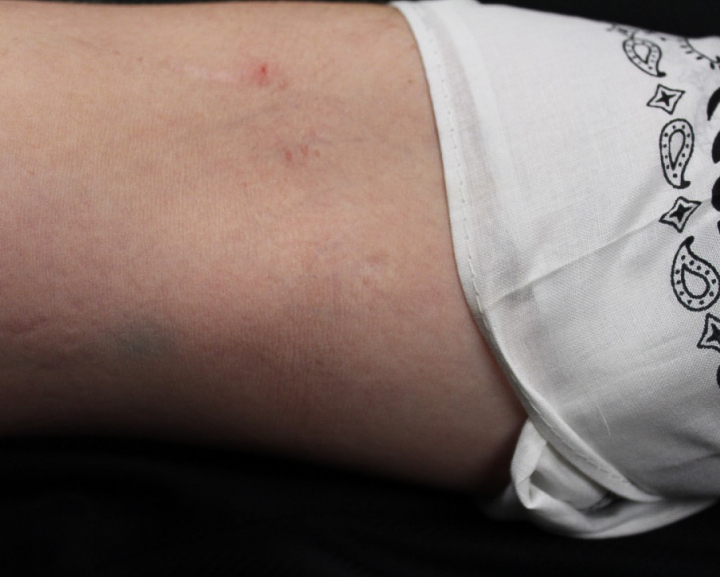 Kyle shows old scars on his inner arm. Now years since he has used, the scars are faded, but he gets skin tags in spots he used to shoot up.
Kyle shows old scars on his inner arm. Now years since he has used, the scars are faded, but he gets skin tags in spots he used to shoot up.
Slaves to the needle
As addiction tightened its grip, heroin subjugated his life:
“It just got to the point where all we’d do was sleep, wake up, shoot up whatever we could find, then try to organize a way to get some money together to go to Baltimore and cop dope. That was it. Every day. Didn’t fucking matter. I didn’t have a job; I got fired from all my jobs. She didn’t have a job; she lost all of her jobs.”
His fiancée’s wealthy family paid for their apartment, but paying for heroin was becoming a real challenge — he was spending $120-a-day for himself “just to not be sick,” and another $120 for his fiancée for a total of $240 daily for heroin– forcing Kyle to turn to alternative money-earning measures.
Kyle took money from his mother’s purse, scammed people, robbed people and stole money from his stepson’s piggy bank — his fiancée’s parents’ had custody of the child. The memory haunts him, but Kyle maintains that they always put the child’s health and safety before their addiction, no matter how far their condition deteriorated.
“That’s one thing I can never forgive myself for,” he said. “I never mistreated him, never hit him and never did anything bad to him. But the time I didn’t spend with him because I was high or fucked up and shit…that shit fucking kills me.”
Kyle and his fiancée were deep in the throes of addiction, but they’d show up for holidays and try to make it appear like everything was normal. Although many times they visited, “just high out of our fucking minds,” and would take turns slipping away to the bathroom to tie off and shoot up.
Life and death
Kyle’s addiction pushed him to the edge. His habits were becoming more dangerous.
“A lot of dope is cut with fentanyl and that kills a lot of people, because it’s too much,” He said. “The mixture is too much. But I used to loving mixing fentanyl with dope.”
Fentanyl paired with heroin nearly killed him. His fiancée and friend Aaron, who overdosed on heroin and Xanax, found a way to “dilute pure fentanyl out of the patch.”
After doing a few shots of heroin earlier in the day, Kyle’s fiancée hit him with a shot of fentanyl.
“[It was] the highest I’ve ever been on opioids,” he said. “Technically I don’t even think you can hallucinate on opioids. I was hallucinating. I was seeing shit that wasn’t there. I was seeing people that weren’t there.”
Kyle didn’t know what would have happened had he overdosed.
“[My fiancée] said at one point I was literally turning purple. My lips were purple and I was turning blue,” he said. If she couldn’t shake him awake or he stopped breathing the only other option would be to call 911 and face heroin possession and paraphernalia charges.
It was the closest Kyle came to joining at least 25 friends that died from opioid-related overdoses.
He knew the problem was nearing a breaking point, “I’d say in another three months, we would have been dead.”
“Me and [my fiancé] were getting into physical fights over dope,” he said. “Fucking punch each other in the face, beat the shit out of each other…she’d throw fucking ceramic mugs at my head and miss it by like an inch.”
They weren’t fighting because they were mad at each other, rather they “were mad at the fact that we’re strung out and the only thing that’s going to make us feel better is all the way in Baltimore, and we don’t have any money to go get it.”
It took a while, but Kyle found help. He found a treatment center and stuck with it. He’s been on methadone for five years and hasn’t taken illicit drugs since Oct. 16, 2012.
After being sober for four years and returning to school, he was playing with the idea of becoming a drug rehabilitation counselor.
Another close friend died of an overdose this fall, and for Kyle, it was a sign to pursue a career helping other addicts. He immediately changed his classes to substance abuse and counseling.
“When he died, I was like, ‘no, I have to do this.”
The next article, “Kyle part two,” details his path to finding help, and the hardships associated with going through treatment and changing his life.
Katrina Schmidt, Carly Haynes and Pablo Roa contributed to this report.
Advertisements Share this: